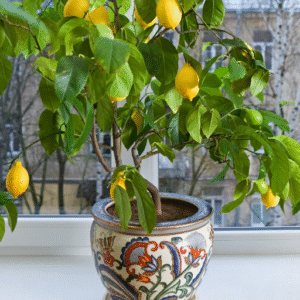Growing an indoor lemon tree can be such a wide opportunity to foster freshness, greenery, and to top it all, homegrown fruity goodies into one living space. This guide helps you learn essential steps and techniques for how to grow a lemon tree indoors, starting from picking the right type to setting optimal growth conditions and watering, pruning, and pest management. Whatever other way you look at it, this all-around guide makes every bit of effort to give you the knowledge and confidence to let your lemon tree flourish under your care in your own home.
Introduction to Indoor Lemon Trees

Lemon trees indoors are a great implementation of beauty with utility into any home. Pick an indoor-growable lemon tree type like Meyer or Ponderosa because these two are good for limited spaces and provide delicious fruit. They need maximum light, at least 8-12 hours a day, preferably next to a south-facing window or with an alternative source of light from grow lights. The soil should have good drainage with a pot that provides good room for root growth and drainage holes at the bottom. Water well and do not forget to check the drainage; abundantly moist soil always harms citrus trees. Before watering, allow the topsoil to dry up slightly. Some pruning will help keep the tree manageable in size and grow well. Checking for pests entails close observation of the foliage and presence of any infestation so that treatment can be applied immediately. When well taken care of, the lemon tree indoors shall thrive and bestow its blessings of fresh fruit all year round.
Benefits of Growing a Lemon Tree Indoors
They make it rewarding to grow lemons indoors because such benefits abound. First off, the opportunity to fresh lemons ripe for the picking at home is a big plus for use in cooking, drinks, and natural medicine. Moreover, fragrant blooms and bright green leaves impart rejuvenating energy to any interior. A lemon tree also purifies the air, contributing to a healthier home. The most rewarding and stress-relieving activity will be nourishment for the indoors lemon tree-grower, bridging their age gap of separation from nature.
Overview of Indoor Citrus Varieties
Choice of citrus for indoor growing should favor those with a compact growth habit amenable to container gardening. Some of the most favored options suitable for indoor cultivation include:
Meyer Lemon
A true lemon crossed with either an orange or mandarin, this variety is favored for indoor cultivation due to its sweet and tangy fruit and a comparatively small stature. It does best in bright indirect sunlight and can set fruit throughout the year if well cared for.
Calamondin Orange
This variety is great for the indoor gardener, with small yet ornamental fruit of a distinctly tart flavor. Calamondin oranges are hardy and able to withstand moderate watering; their small stature makes them suitable for compact indoor spaces.
Kaffir Lime
This one is grown more for the sake of its fragrant leaves rather than its fruit, and it can be a great addition to any indoor citrus collection. The glossy green leaves are used widely in cooking, while the plant’s bushy nature adds a good amount of greenery to any room.
Key lime
It is a compact variety that holds great aesthetic value because of the touching fragrance of the fruits. It needs constant direct sunshine and warmth to produce tasty limes with a thin skin capable of great use in confectionery and drinks.
The myriad varieties charm indoor spaces through colorful foliage, sweet fragrances of flowers, or juicy fruits. With the best light, moisture-retentive yet well-draining soils, and plenty of care, you can have the pleasure of cultivating citrus trees right within your abode.
Understanding Lemon Tree Needs
Each lemon tree has various needs that must be fulfilled for it to grow healthy indoors. Bright, indirect sunlight is the first consideration. Hence, the tree can be found near a south-facing window or supplemented with grow lights. Proper watering is deemed essential; I allow the soil to dry out about an inch before watering to avoid overwatering. Good drainage is paramount, so I use either ready citrus potting soil or mix my own from sand and organic matter so the roots don’t rot. Fertilization is done on a regular basis using a fertilizer tailored specifically for citrus during the tree’s active growing season to keep it nourished. Lastly, humidity should be monitored while avoiding the moderate humidity preferred by the lemon tree; mist the leaves or run a humidifier if need be. My lemon tree thrives in these conditions, providing fragrant blooms and fruits.
Choosing the Right Pot for Your Lemon Tree
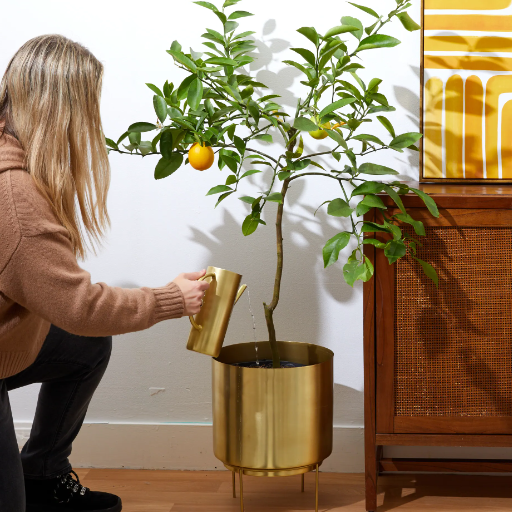
When deciding on the right pot for your lemon tree, make sure it allows plenty of room for root growth and drains well. A pot with an 18- to 24-inch diameter is considered ideal so that a young tree has enough room to grow. Select something made of terracotta or plastic, as they tend to be durable and are suitable for most climates. The pot should have several drainage holes to stop puddling inside, because puddling can cause root rot. Use a saucer to catch any overflow, and protect your surfaces, but never allow the tree to sit in standing water. A well-chosen pot lays down the foundation of health and productivity for your lemon tree over the long term.
Size and Material Considerations
If you’re deciding on pots for your lemon tree, you want to select one with adequate room for root expansion so as to have healthy growth. Choose one at least a quarter larger than the current root ball so that the tree has room to grow as it ages. Such materials as terracotta are ideal: they breathe and are durable. Plastic pots too, can work just fine, just as they provide a bit of charm from their lightweight and versatility. Ensure that the pot has at least a few holes in the bottom to drain excess water; in addition, a saucer must be placed under it to catch water but keep the tree from sitting in it. Picking the right size and material creates the very environment for your lemon tree to prosper.
Drainage Requirements for Citrus Trees
Drainage is truly a necessity for citrus trees, while excess moisture in the soil may bring about root rot and problems. My personal experience has taught me that for good drainage, the pot must have several drainage holes; these allow the extra water to escape. Also, use a well-draining soil mix labeled for citrus or modify standard potting soil by adding abrasives such as sand or perlite to enhance aeration. Water the tree thoroughly, but let the soil become just a little dry between sessions: this condition emulates the natural state in which citrus trees comfortably exist. It is okay to set a saucer under the pot to catch excess water; however, do not ever let the plant roots sit in standing water, which would put the plant at risk. By adhering to these simple measures, you can keep your citrus tree healthy and vibrant.
Preparing the Potting Mix
In the preparation of the potting mix, I make sure that the mix will drain well and enrich the nutrients to support the health of the citrus tree. Usually, I opt for a premade potting mix intended for citrus; it can maintain the right nutrients and type of structure. In case I’m mixing one myself, then it involves some high-quality potting soil and some materials like sand or perlite to maximize drainage and aeration. Another really important consideration is that the mix stays loose; it must never retain plenty of moisture, as citrus trees hate waterlogged soil. With these considerations, I believe I am setting up the perfect setup for the growth of my citrus tree.
How to Grow a Lemon Tree Indoors: Essential Care Tips
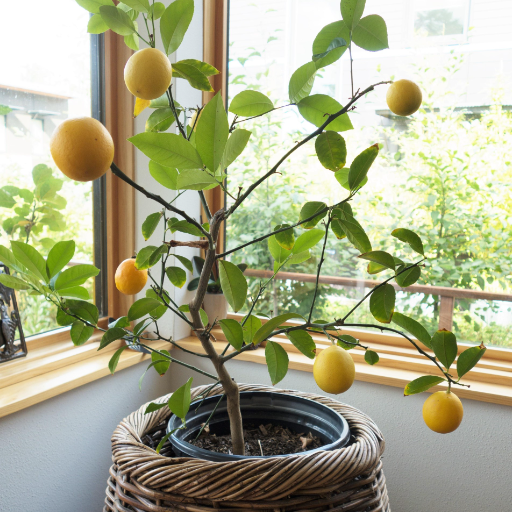
How to grow a lemon tree indoors? A critical factor, when watering and fertilizing, is to maintain the health of the lemon tree and to obtain better production. The tree should be deeply watered but following a dry spell in the upper surface, that is, of an inch or two, for the water should not sit down there around the roots lest roots begin to rot. Fertilize the tree in the active growing months from spring to summer in intervals of every four to six weeks with a balanced citrus fertilizer to supply nitrogen, phosphorus, and potassium requirements. Provision of nutrients should lessen when winter sets in and growth slows down. If cared for consistently in these respects, your lemon tree will always do well and bear liberally.
Watering Guidelines for Indoor Lemon Trees
While watering indoor lemon trees, the balance maintained accordingly is to keep the soil consistently moist but not in a soggy condition. I let the soil dry up approximately two inches before watering again; otherwise, it might lead to root rot. Watering will always increase during summer due to evaporation speed, contrasted with a decrease in winter as slowdown in the growth rate of trees occurs. I always feel the soil with my finger until I determine whether more water is needed or not because the roots should either get what they want or not really need it-something I want to be considered.
Fertilizer Recommendations for Optimal Growth
In order to get the best growth from my tree fertilization is done during active growing months, usually in spring and summer, using a balanced, water-soluble fertilizer with an equal N-P-K proportion of, for example, 10-10-10. It is applied once a month after diluting to half strength so the tree isn’t overfertilized and the roots don’t end up getting damaged. Compost or worm castings are very good organic fertilizers, providing slower release of nutrients. Fertilizing is totally stopped during fall and winter, thus keeping with the tree’s dormant phase when extra nutrition is not required.
Light Requirements for Healthy Lemon Trees
Lemon trees require plenty of bright, direct sunlight for sustenance: about 6 to 8 hours at least. I place mine in the sunniest spot available, making sure it stays under the rays throughout the day. For indoor growth, a south-facing window is best, with grow lights needed for extra help during the shorter days of winter. Photosynthesis requires sunlight, and photosynthesis itself helps make the life of lemon fruit and the tree.
Pruning and Maintenance of Indoor Lemon Trees
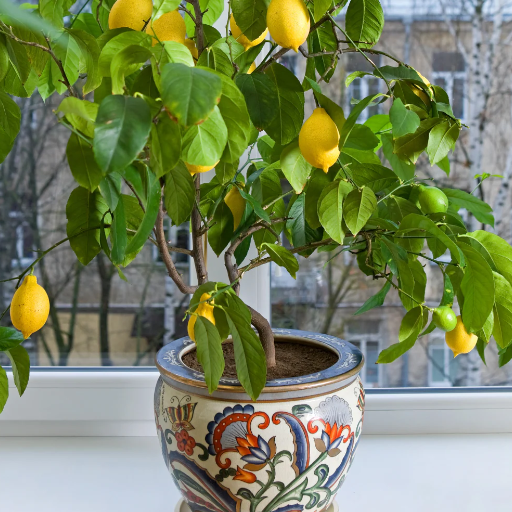
Any end of pruning or maintenance action secures the health and productivity of an indoor lemon tree. Through pruning, once branch nuisances are removed: dead, wither, damaged, or diseased branches ensure fine air circulation inside and less chances for attack or infection. Bent, crossing branches must, henceforth, be pruned to shape the tree and keep it in good called; watch out for suckers, too-Growers from beneath the graft line, and cut them out right away so that resources go into the fruiting parts of the tree. Ensure to clean the pruning tools before using them, so as to avoid contamination; pruning should be done in late winter or early spring, just before budding starts. Washing off dust from the leaves and keeping an eye on pests will help contribute to the tree’s well-being with regular maintenance.
When and How to Prune Your Lemon Tree
From my research and my own experience, lemon trees are best pruned in late winter or early spring, just prior to leafing out and new-branch formation. This allows quick recovery of the tree with energy directed to fresh healthy growth. Pruning is essential for shaping the tree, allowing air circulation, and provocation of fruit production.
While pruning, I like to remove dead, damaged, or diseased branches because they could harm the tree or attract pests. After that, I prune crossing or overcrowded branches to open the canopy up for good exposure to sunlight. I always give nice clean cuts above a bud or branch joint, using sterilized pruning shears to avoid infections. At the same time, I remove suckers growing below the graft line because they do not bear fruit and they take away resources needed by the tree. Keeping tools clean and pruning at the right time is the key to ensuring that one can grow a healthy and fruit-producing lemon tree.
Common Indoor Lemon Tree Problems and Solutions
Yellowing leaves are a classic indication that water may have been applied mildly or the pot lacks good drainage. To remedy this, I ensure the soil dries slightly through intervals between watering phases. Another issue is nonbearing fruit; this could be due to lack of light. I solve this by positioning my tree near a sunny window, or I use a grow light every day for about 8-12 hours. If pests like spider mites or aphids invade, I spray the leaves with a solution of water with mild soap or even neem oil. For leaf drop, I analyze the environment for sudden temperature changes and drafts, then proceed to stabilize the temperature and environment around the tree. Being an observant mother helps me rescue the lemon tree against impending doom indoors.
Tips for Keeping Indoor Citrus Healthy
Indoor citrus trees must be taken care of according to the required amount of light, water, and nutrients. My tree is kept subjected to a high amount of bright light and direct sun rays for eight to twelve hours a day, placed on a south-facing window, or with supplemental grow lights. Watering varies with the seasons, but I generally let the soil dry out an inch on top before watering again, thus preventing root rot. Feeding with citrus fertilizer is done regularly to ensure that my trees acquire all the essential nutrients they need throughout their growing season. Pruning shapes the tree and eliminates dead or overly crowded branches, consequently allowing better air circulation. When it comes to the pest problems of spider mites or scales, I respond quickly by cleansing the leaves with insecticidal soap or neem oil. A stable environment with consistent temperature and humidity also inhibits stress-related issues like leaf drop. Keeping these in mind, I believe my indoor citrus tree will be healthy and productive.
Pollination and Fruit Production
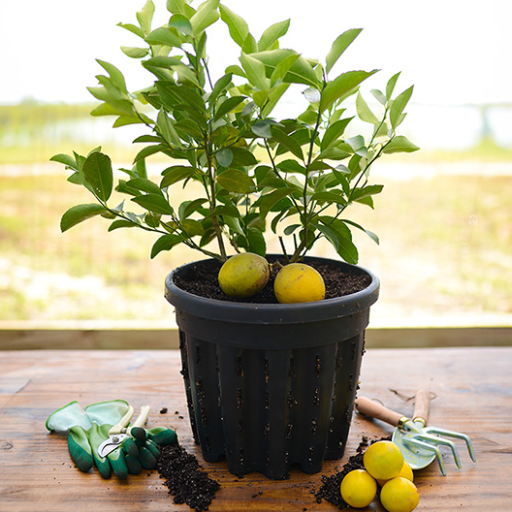
Pollination is everything for fruiting indoor citrus trees, especially those that require cross-pollination. Solar cannot penetrate walls and windows in pollinator nurseries; thus, natural pollinators like bees remain unavailable for the trees they put indoors. A slight improvement in fruit set occurs if I manually disperse pollen from one flower to another using a small soft brush or cotton swab, thereby simulating pollinators. Other conditions for high fruit yield include good light, adequate nutrients, and careful maintenance of the tree. Under suitable pollination conditions and growing circumstances, my indoor citrus tree stands ready to produce decent, fruitful produce profusely: tasty and delicious.
How to Pollinate Indoor Lemon Trees
Pollination is a manual task with the indoor lemon tree. The first step involves identifying the male and female parts of the flowers. The male part, called the stamen, holds pollen; the female side, known as the pistil, waits for the pollen to get transferred to make fruits. Light pressure is enough for any cross-pollination made, so one should gently take pollen with a brush or a cotton swab from the stamen of one flower and lightly brush it on the stigma of another flower. This process shall be done when the flowers are in full bloom. Up to this step, there ought to be enough sunlight provided by the weather, while proper watering and fertilizing shall create the ideal conditions for pollination and fruit growth.
Expected Timeline for Fruit Production
Most types of fruit begin to develop from anywhere between a couple of weeks and several months after successful pollination, depending on the plant species. Faster-growing plants, including most vegetables, tend to put out fruits within 4 to 6 weeks. But fruit trees or varieties that mature slowly can take months or even a whole growing season. I like to regularly inspect the plants for any evidence of fruit set, like swelling at the base of flowers, all the while providing care to nurture healthy development. The journey certainly demands patience and plenty of attention to environmental factors for a good harvest.
Harvesting Your Lemons
When I am harvesting lemons, I pay close attention to their coloration and size. Properly ripe lemons are bright yellow, firm to the touch, and about the size of a small fist. Harvesting too soon could yield less juice and flavor; therefore, I let the lemons achieve the highest state of ripeness by looking at their appearance and occasionally testing one for juiciness. To harvest, I either clip them with pruning shears or give the fruit a slight twist off-grafting, leaving a small patch of stem on the fruit to help it keep. Ripe lemon harvesting also encourages the tree toward further fruit production during the growing months.
References
-
Orchard People: This article discusses the ideal conditions for indoor lemon tree care, including sunlight and temperature requirements. Read more here.
-
Pennington: A detailed guide on how to grow and care for an indoor lemon tree, covering temperature, light, and other essential factors. Read more here.
-
Food Gardening Network: Offers practical tips for keeping indoor citrus trees, including lemons, healthy and thriving. Read more here.
Frequently Asked Questions (FAQ)
What are the best tips for keeping indoor lemon trees healthy?
To keep your indoor lemon tree healthy, it’s important to provide adequate light and moisture. Make sure your lemon tree is placed in a location where it can receive direct sunlight for at least 8 hours a day. The ideal temperature for lemon trees is around 65 degrees Fahrenheit, as they thrive in warm conditions. Regularly check the soil moisture and let the soil dry out slightly between waterings. Additionally, using fertilizer specifically designed for citrus can help boost growth and fruit production. Monitoring humidity levels in the home can also benefit your tree’s overall health.
How often should you prune a lemon tree indoors?
Pruning is essential for maintaining the health and shape of your indoor lemon tree. You should prune your lemon tree at least once a year, preferably in the spring, to remove any dead or damaged branches. This will encourage new growth and help the tree focus its energy on producing fruit. When pruning, make sure to use clean, sharp tools to avoid damaging the tree. Keeping a balanced shape will also promote better air circulation and light penetration, which are crucial for trees that are actively growing. Regular pruning will help your indoor lemon tree thrive.
What kind of pot do I need for my lemon tree to grow indoors?
Choosing the right pot is crucial for the success of your indoor lemon tree. A well-draining potting mix is essential to prevent root rot, so select a pot with drainage holes. The pot should be slightly larger than the root ball of your lemon tree, allowing it enough space to grow without becoming root-bound. A pot that is too large can hold excess moisture, which is not ideal for lemon trees. It’s also beneficial to use a pot made from a breathable material, like terracotta, to help regulate moisture levels. Remember to repot your lemon tree every couple of years as it grows.
How to pollinate lemon trees indoors?
Pollinating your lemon tree indoors can be a simple yet essential task for fruit production. You can use a small brush or cotton swab to transfer pollen from the male parts of the flowers to the female parts. This is especially important for indoor lemon trees, as they may not have access to natural pollinators like bees. Pollinating in the morning when the flowers are fully open is often the most effective. If you notice that your tree is not bearing fruit, it could be due to insufficient pollination. Taking the time to pollinate your indoor citrus can lead to a bountiful harvest.
What are the best varieties of lemon trees to grow indoors?
When considering which varieties to grow indoors, the Meyer lemon tree is a popular choice. Meyer lemon trees are smaller and more compact, making them ideal for indoor cultivation. Another good option is the Improved Meyer lemon, which is known for its sweet fruit and improved disease resistance. Dwarf lemon trees are also suited for pot cultivation, as they remain small while still producing fruit. Regardless of the variety you choose, ensure that they receive plenty of natural light and proper care to thrive indoors. Each of these options can add a delightful citrus scent to your home while providing fresh lemons.

